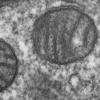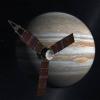Science & Technology
 New software being developed by CU Boulder together with Rice University and the University of California San Diego will allow for the development of digital textbooks that students can annotate, giving a window into a particular learner’s state of mind and grasp of subject matter.
New software being developed by CU Boulder together with Rice University and the University of California San Diego will allow for the development of digital textbooks that students can annotate, giving a window into a particular learner’s state of mind and grasp of subject matter. If you are a male barn swallow in the United States or the Mediterranean with dark red breast feathers, you’re apt to wow potential mates. But if you have long outer tail feathers in the United States, or short ones in the Mediterranean, the females
If you are a male barn swallow in the United States or the Mediterranean with dark red breast feathers, you’re apt to wow potential mates. But if you have long outer tail feathers in the United States, or short ones in the Mediterranean, the females Researchers at the University of Colorado Boulder have used a process called single-molecule imaging to visualize the process that telomerase, a powerful enzyme that can promote cancer growth, uses to attach itself to the ends of chromosomes.
Researchers at the University of Colorado Boulder have used a process called single-molecule imaging to visualize the process that telomerase, a powerful enzyme that can promote cancer growth, uses to attach itself to the ends of chromosomes. A solar storm that jammed radar and radio communications at the height of the Cold War could have led to a disastrous military conflict if not for the U.S. Air Force’s budding efforts to monitor the sun’s activity, a new study finds.
A solar storm that jammed radar and radio communications at the height of the Cold War could have led to a disastrous military conflict if not for the U.S. Air Force’s budding efforts to monitor the sun’s activity, a new study finds. <p><span id="docs-internal-guid-50f0319b-3245-0f7a-c1af-64606e2c207f">Climate change could remobilize abandoned hazardous waste thought to be buried forever beneath the Greenland Ice Sheet, new research finds.</span></p>
<p><span id="docs-internal-guid-50f0319b-3245-0f7a-c1af-64606e2c207f">Climate change could remobilize abandoned hazardous waste thought to be buried forever beneath the Greenland Ice Sheet, new research finds.</span></p>- <p>The University of Colorado’s BioFrontiers Institute has received a $1 million gift from John F. Milligan and Kathryn Bradford-Milligan of Hillsborough, California to establish a fund for graduate students participating in an interdisciplinary bioscience program.</p>
 <p>Colorado Mesa University and CU Boulder announced the expansion of their engineering program partnership to allow students to earn a Bachelor of Science in Civil Engineering from CU Boulder by taking classes delivered at Colorado Mesa.</p>
<p>Colorado Mesa University and CU Boulder announced the expansion of their engineering program partnership to allow students to earn a Bachelor of Science in Civil Engineering from CU Boulder by taking classes delivered at Colorado Mesa.</p> <p>The rate of groundwater contamination due to natural gas leakage from oil and gas wells has remained largely unchanged in northeastern Colorado’s Denver-Julesburg Basin since 2001, according to a new University of Colorado Boulder study based on public records and historical data.</p>
<p>The rate of groundwater contamination due to natural gas leakage from oil and gas wells has remained largely unchanged in northeastern Colorado’s Denver-Julesburg Basin since 2001, according to a new University of Colorado Boulder study based on public records and historical data.</p>
<div>
</div> <p>When it comes to mitochondrial inheritance, maternal genes rule the day at the expense of paternal ones. But why? A new study, published today in the journal <em>Science</em> and led by University of Colorado Boulder researchers, sheds new light on a longstanding biological mystery.</p>
<p>When it comes to mitochondrial inheritance, maternal genes rule the day at the expense of paternal ones. But why? A new study, published today in the journal <em>Science</em> and led by University of Colorado Boulder researchers, sheds new light on a longstanding biological mystery.</p>
<div>
</div> <p>A group of University of Colorado Boulder faculty and students are anxiously awaiting the arrival of NASA’s Juno spacecraft at Jupiter July 4, a mission expected to reveal the hidden interior of the gas giant as well as keys to how our solar system formed.</p>
<p>A group of University of Colorado Boulder faculty and students are anxiously awaiting the arrival of NASA’s Juno spacecraft at Jupiter July 4, a mission expected to reveal the hidden interior of the gas giant as well as keys to how our solar system formed.</p>


